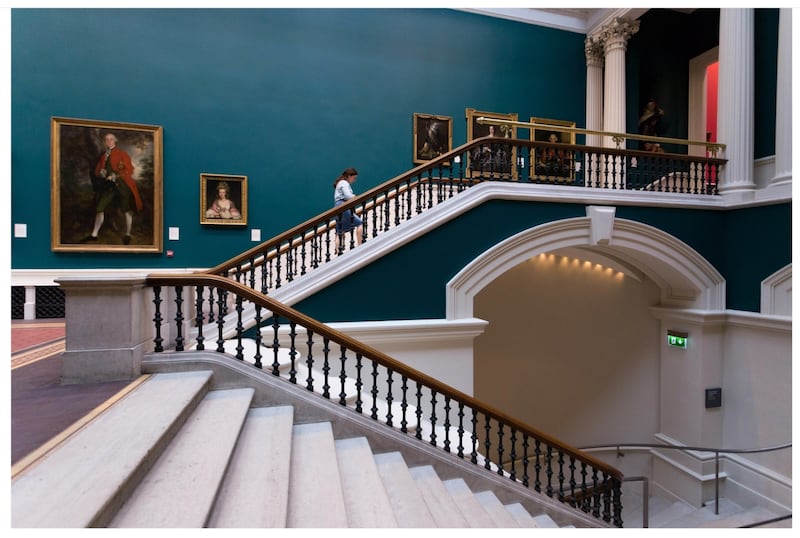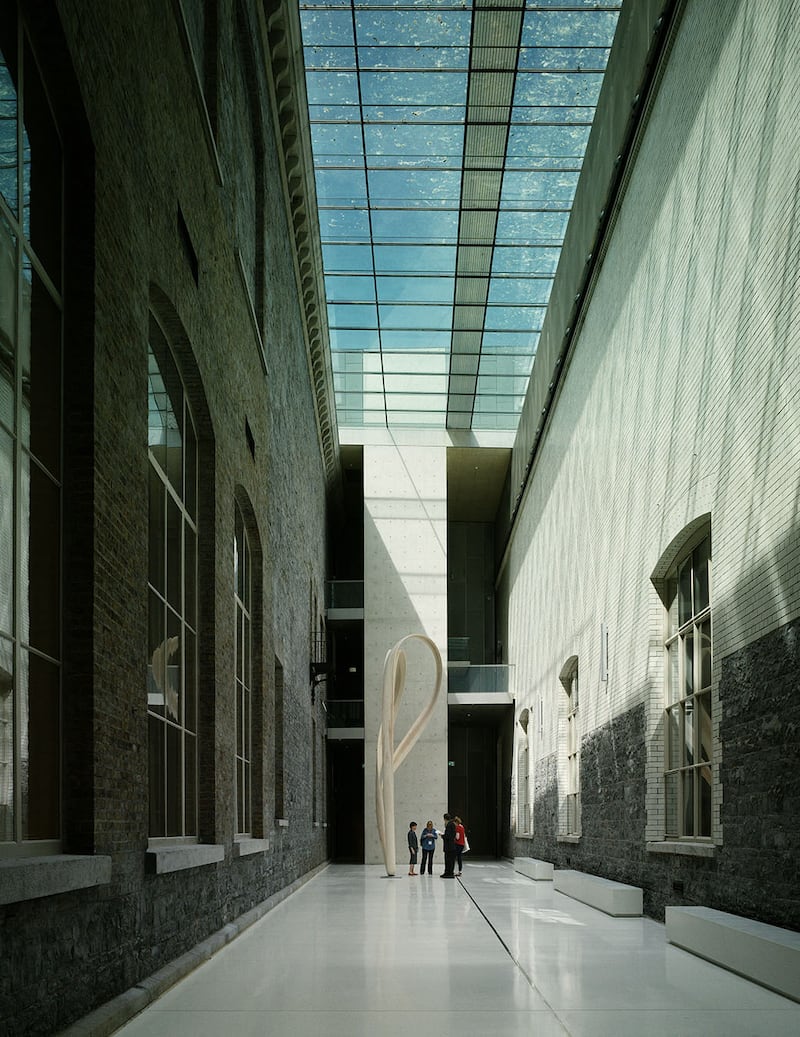Who’d have thought Jack Yeats’s paintings would evoke so well the mood of these 21st-century Covid days? Drifting masked through the semi-emptiness of Jack B Yeats: Painting & Memory at the National Gallery, it’s easy to view his solitary, ethereal wanderers as socially distanced lockdown ramblers, walking themselves to a standstill through their jagged, disordered, feverishly vivid landscapes.
As the exhibition makes clear, much of Yeats’s work, even when it deals with more crowded scenes and shared experiences – theatre, sailing, singing, swimming, horseracing – is an evocation of the past recollected from a future solitude and thereby imbued with a certain imprecision and nostalgia. Collectively, the mood of the pictures suggests an aftermath, a wistfulness for lost worlds energised by an urgency to recapture them.
There is encouragement, too, for an older person, in seeing how Yeats's stubborn persistence with his creative vision bore fruit as he aged
I remember seeing Yeats’s work for the first time when I came to Ireland 30 years ago and not finding it very approachable or part of any tradition that I recognised; these days, its singularity and the particularity of its viewpoint are what seem so admirable about it.

There is encouragement, too, for an older person, in seeing how Yeats’s stubborn persistence with his creative vision bore fruit as he aged. A state of alternating “wonder and despondency”, as the exhibition commentary puts it, combined with an increasing technical mastery – Yeats learned to paint, and especially to use oils, at a relatively late age – gave him a creative momentum that continued to increase with the passing years. The 1940s, when he was in his 70s, seem to have been his most fertile decade, a time when he consistently managed to produce more than 100 pictures a year.
The resourcefulness but vulnerability of old age is a pervasive theme elsewhere in the gallery’s current shows, particularly in the shortlisted paintings in the Zurich Portrait Prize, works that prominently feature elderly relatives and friends of the artists as they try to survive pandemic-induced isolation. The crumpled figure (and wheelchair) of Selena Caulfield’s Dad 5/10/2020, as seen through a Perspex isolation screen, oozes pathos, while Nick Miller’s portrait of his old friend and fellow painter, the octogenarian Patrick Hall, as he continues doggedly to produce work in his studio in Co Sligo, is a study in creative perseverance.
There are pandemic self-portraits, among them Cian McLoughlin’s Lockdown Three, in which the artist stares out at us through a turquoise-and-ochre psychological murk, and Emily O’Flynn’s video of selfies of often harrowing moments – partings, hospitalisation – in Portrait of a Girl Throughout a Pandemic.
In all, the mood is elegiac, with a general sense of loss and mourning alleviated by kindness and empathy, something echoed, too, in the Zurich Young Portrait Prize shortlist, where artists aged five-13 communicate a high level of astute compassion, along with an impressive level of technical accomplishment, for the trials, emotional and physical, that the adults around them are going through.
There’s a further portrait treat in Picturing People (closing on December 5th), a selection of the print gallery’s recent photographic acquisitions by some outstanding Irish and international practitioners, including Jane Bown, Seán Hillen, Dorothea Lange, Lee Miller and Inge Morath. From Puck Fair visitors to picnicking nuns to Free Derry street scenes, from pilgrims to lovers to commuters, there are many different strands and eras packed into these 70 powerful images, succinctly building a broader story of Irish survival and change.

And then, finally, there’s also Joseph Beuys, the German conceptual artist whose centenary falls this year and who evolved his own quite elevated views of Irishness during visits in the 1970s and 1980s, going so far as to declare it “the brain of Europe”, partly because of what he saw, presciently, as its potential for healing conflicts between its different communities. Unity in Diversity: Joseph Beuys in Ireland documents his visits and performances at Irish sites such as Newgrange and the Giant’s Causeway through a series of strikingly offbeat photographs by close friend and art critic Caroline Tisdall.
Mysteriously, these images of his impressive but gangling hatted-and-coated figure engaging incongruously with Irish landmarks manage effectively to convey Beuys’s essential message about art as a remedy for trauma and division.
All in all, the gallery’s current displays (entry is free, apart from the Jack Yeats show) feel thoughtfully designed as an act of solidarity with the struggles of the present moment. And for this observer, on the cusp of a bus pass and freshly recovered from a relatively harmless though energy-squelching bout with Covid, they’re a personal tonic.

